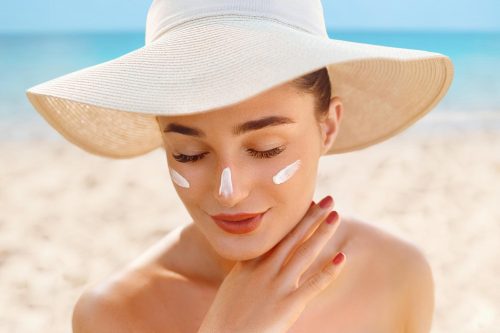I. Introduction
Protecting the skin from the harmful effects of the sun is crucial for maintaining healthy and youthful-looking skin. The sun emits ultraviolet (UV) rays that can cause skin damage, including sunburn, premature aging, and skin cancer. Sunburn is a common type of skin damage caused by overexposure to UVB rays, which can lead to redness, swelling, and pain. Long-term exposure to UVA rays can cause premature aging, including wrinkles, age spots, and loss of skin elasticity. Additionally, UVA and UVB rays can cause DNA damage that can lead to skin cancer, including melanoma, the deadliest form of skin cancer. Therefore, it is important to take steps to protect the skin from the sun’s harmful rays. This includes wearing protective clothing, hats, and sunglasses, as well as using sunscreen with an SPF of at least 30.
II. Wearing protective clothing
Wearing protective clothing that covers the skin is an important way to protect against sun damage. Long-sleeved shirts, long pants, and wide-brimmed hats can provide significant protection from the sun’s harmful rays. When choosing protective clothing, it is important to consider the fabric’s weave, color, and weight. Clothes made from tightly-woven fabrics like denim or polyester offer better sun protection than loose-weave fabrics like cotton. Darker colors also provide better protection than lighter colors. It is also important to choose lightweight fabrics that are breathable and comfortable to wear, especially in hot weather.
For those who are unable to wear protective clothing due to their occupation or activities, sun protective clothing is available. Sun protective clothing is made from specialized fabric that has been tested and rated for its ability to block UV rays. Some brands offer clothing with UPF (Ultraviolet Protection Factor) ratings, which indicate the level of UV protection the garment provides. UPF ratings range from 15 to 50+, with higher numbers indicating greater sun protection.
III. Wearing hats and sunglasses
Wearing hats and sunglasses can provide additional protection from the sun’s harmful rays. Wide-brimmed hats offer the best protection for the face, neck, and ears, while sunglasses protect the eyes and the skin around them from UV damage. When choosing hats and sunglasses, it is important to look for products that offer 100% UV protection. Polarized lenses can also help reduce glare and improve visibility. When choosing sunglasses, it is important to consider the shape and size of the frame to ensure that they provide adequate coverage for the eyes and the surrounding skin.
For those who participate in water sports or other outdoor activities, water-resistant hats and sunglasses are available. These products are designed to stay in place and provide sun protection even when wet. It is also important to consider the fit of hats and sunglasses, as loose-fitting products may shift or fall off during activity.
IV. Using sunscreen
Using sunscreen is an important part of sun protection. Sunscreen works by absorbing or reflecting UV rays before they can penetrate the skin. When choosing a sunscreen, it is important to look for products with an SPF of at least 30, which blocks 97% of UVB rays. Sunscreen should be applied 15 to 30 minutes before going outside and reapplied every two hours or after swimming or sweating. It is important to use enough sunscreen to cover all exposed skin, including the face, neck, ears, and hands.
Different types of sunscreens are available, including chemical and mineral sunscreens. Chemical sunscreens absorb UV rays, while mineral sunscreens reflect them. Both types can be effective, but some people may have sensitivities to certain ingredients. It is important to choose a sunscreen that is appropriate for your skin type and preferences. For those with sensitive skin or allergies to certain ingredients, it is important to choose a sunscreen that is hypoallergenic and free from fragrances and other irritants. Some sunscreens are also formulated for specific skin types, such as oily or acne-prone skin.
It is also important to note that sunscreen should not be the only method of sun protection. Sunscreen should be used in combination with other methods, such as wearing protective clothing, hats, and sunglasses, and seeking shade during peak sun hours. Additionally, sunscreen should not be used as a way to prolong sun exposure. While sunscreen can provide some protection, it is important to limit sun exposure and avoid sunburn and other forms of skin damage.
V. Conclusion
In conclusion, protecting the skin from the harmful effects of the sun is crucial for maintaining healthy and youthful-looking skin. Sun damage can cause a range of issues, from sunburn and premature aging to skin cancer. To protect against the sun’s harmful rays, it is important to wear protective clothing, hats, and sunglasses, as well as use sunscreen with an SPF of at least 30. By taking these steps, you can enjoy the outdoors while also keeping your skin healthy and protected.

